Coffee perks us up with their aroma and caffeine, but did you know that the used coffee grounds could be used for our foliar friends too? Let’s find out which plants like coffee grounds and how to apply this as gardening material.
Are coffee grounds good for plants?
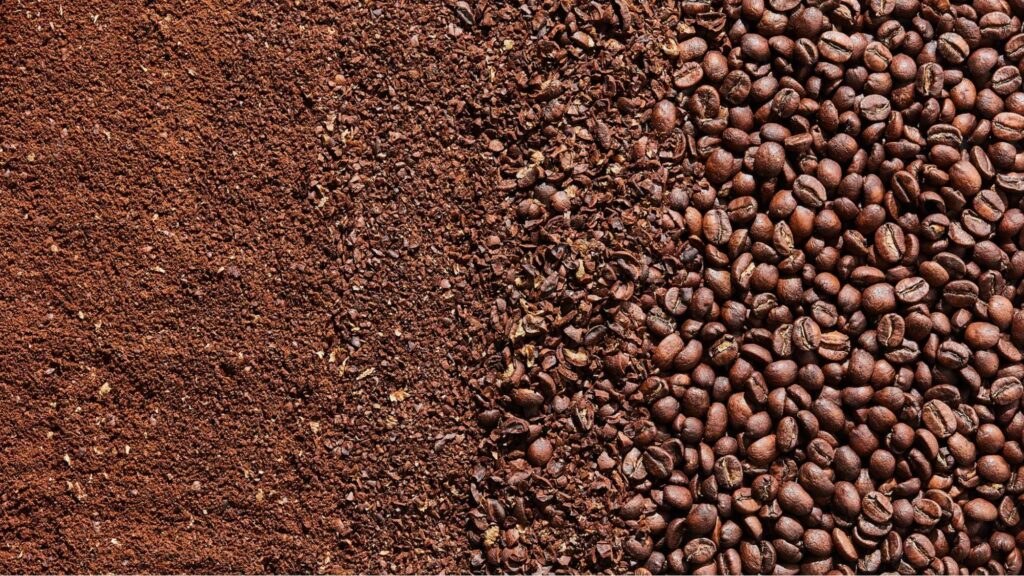
Coffee grounds are good for plants when applied in the right amounts. They provide plants with nitrogen, promoting growth and improving soil structure.
They also contain minerals like calcium, potassium, and phosphorus, enhancing soil fertility. That said, excessive use can make the soil too acidic, so it’s best when used in moderation.
Plus, mixing coffee grounds with other compost materials helps maintain a balanced pH.
What plants like coffee grounds?
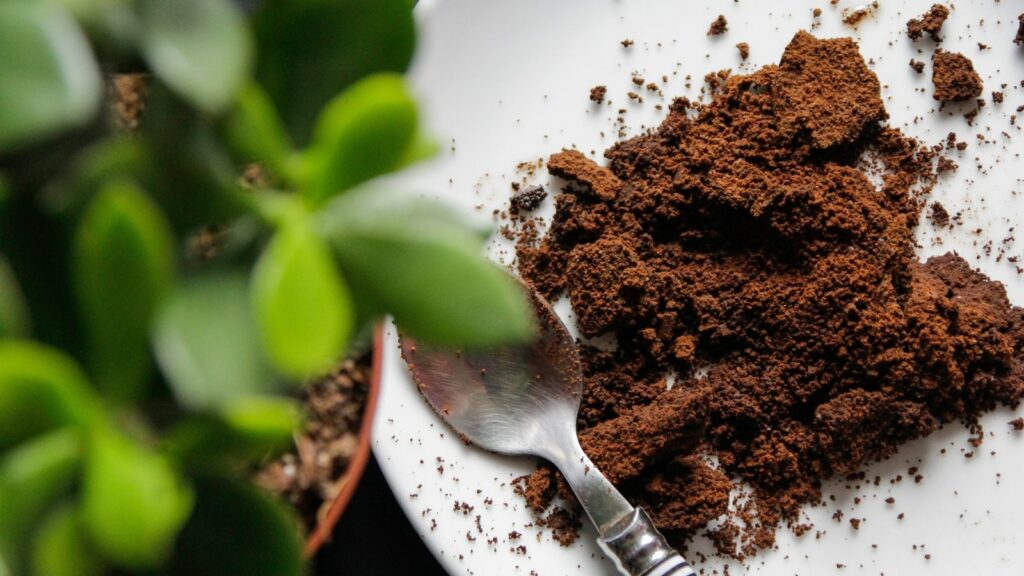
Plants that like coffee grounds tend to have a preference for soils that lean toward the acidic side of the pH scale. Let’s look at some great options you can choose from.
Roses
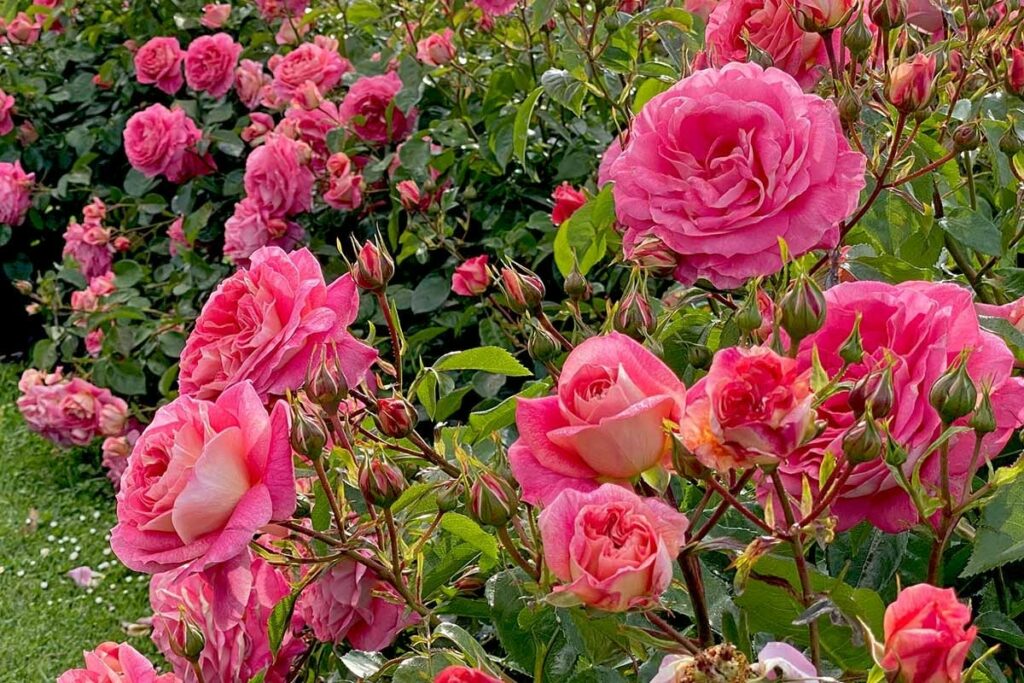
Image by Gardener’s Path
Roses thrive in slightly acidic soil – making coffee grounds, with their acidic nature, a great amendment. However, use them moderately to avoid over-acidity.
The right amount can lead to improved plant health, including enhanced leaf development and potentially increased flower production. Plus, coffee grounds offer natural pest-repelling properties.
Azaleas
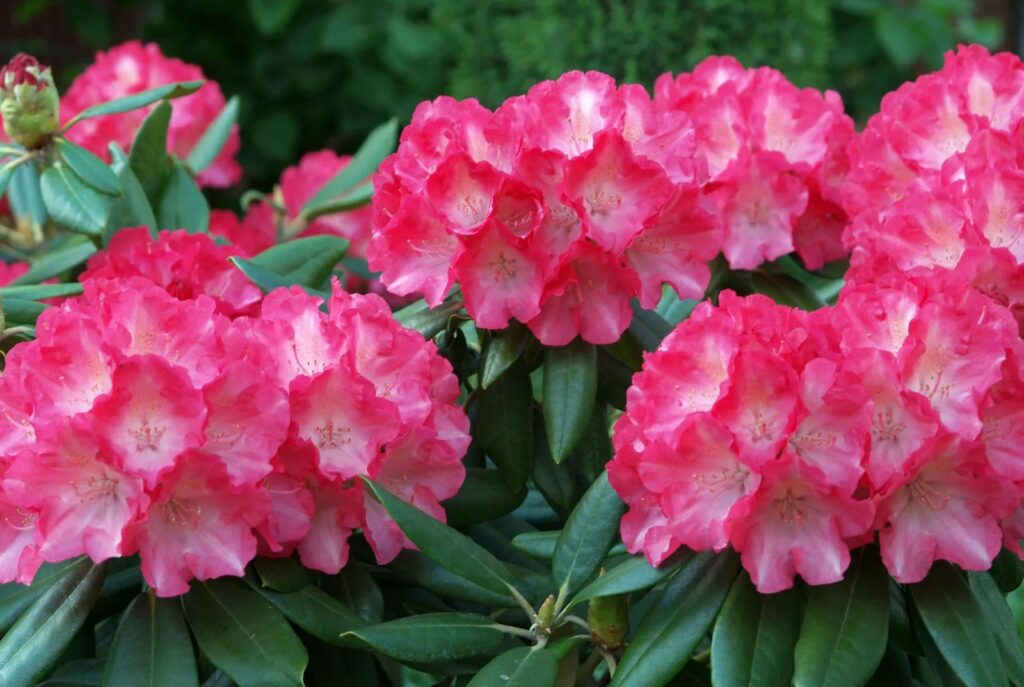
Azaleas, famed for their vivid blooms, grow moderately well. They love acidic soil – exactly what coffee grounds offer.
It’s best to avoid excessive acidity by using them carefully. Using coffee grounds on azaleas can promote healthier growth and more beautiful flowers, as the acidity creates better conditions for these ornamental plants.
Blueberries
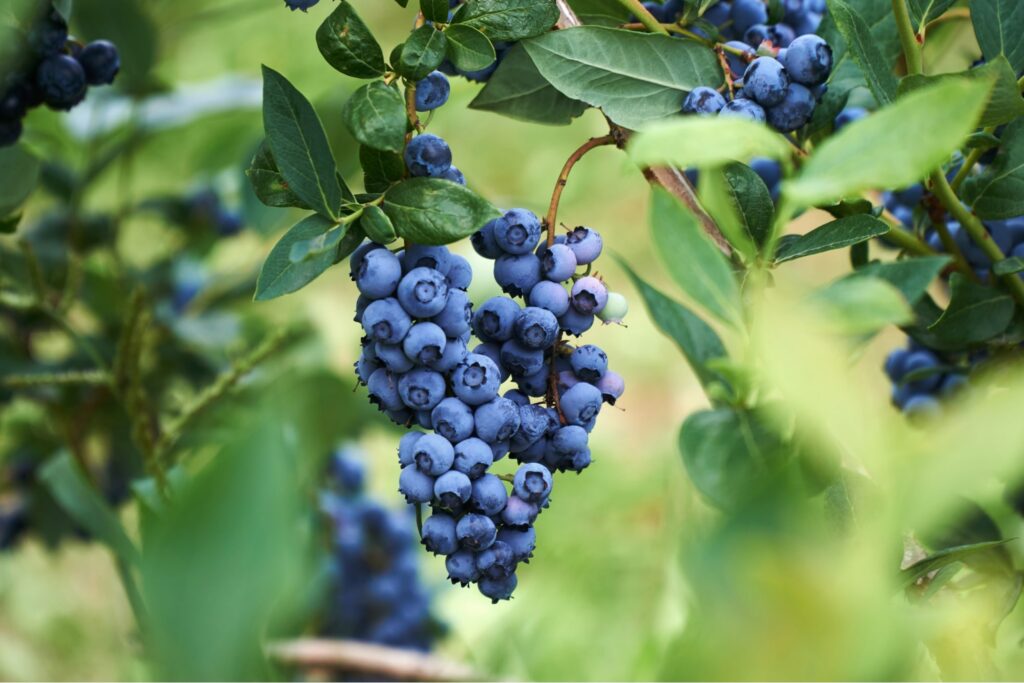
Blueberries are valued for their tasty fruits and health advantages as well as being moderately easy to cultivate. While they do love a bit of acidity in their soil, too much can be harmful.
Coffee grounds used on blueberries support better growth, resulting in better foliage. Plus, they’re bound to increase their fruit production as long as the conditions are right.
Camellias
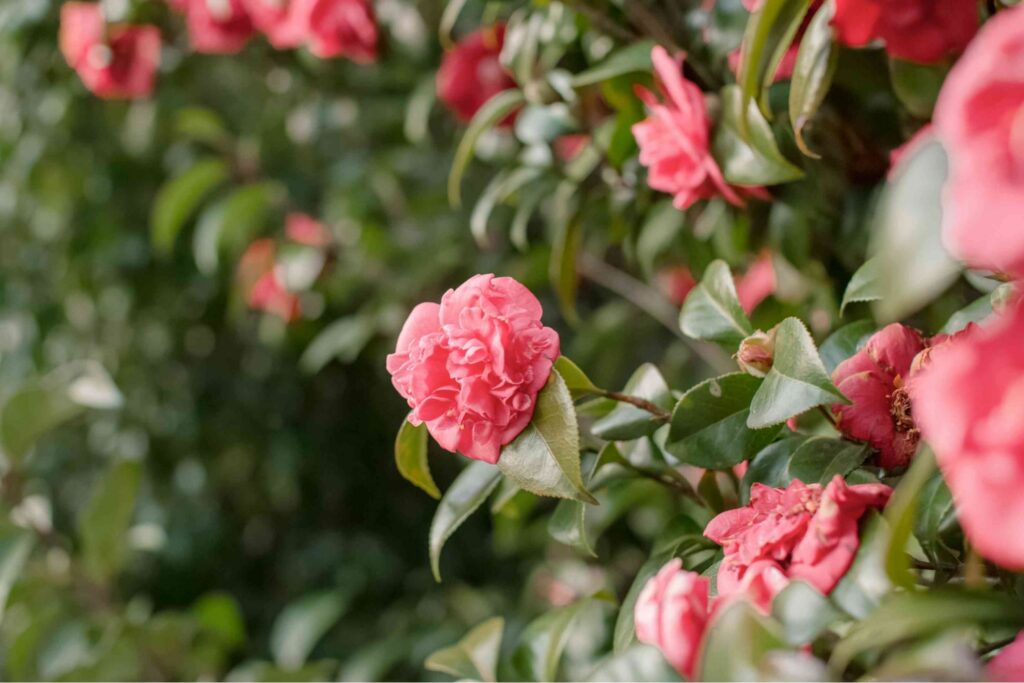
Coffee grounds can benefit camellias – renowned for their beautiful and often fragrant flowers. While coffee grounds help in increasing the acidity in the soil, you still need to prevent over-acidity.
Carefully applying coffee grounds to camellias supports their growth by creating optimal soil conditions for these ornamental plants. Plus, the increased health enhances the flower development, as long as it’s moderately applied.
Hydrangeas
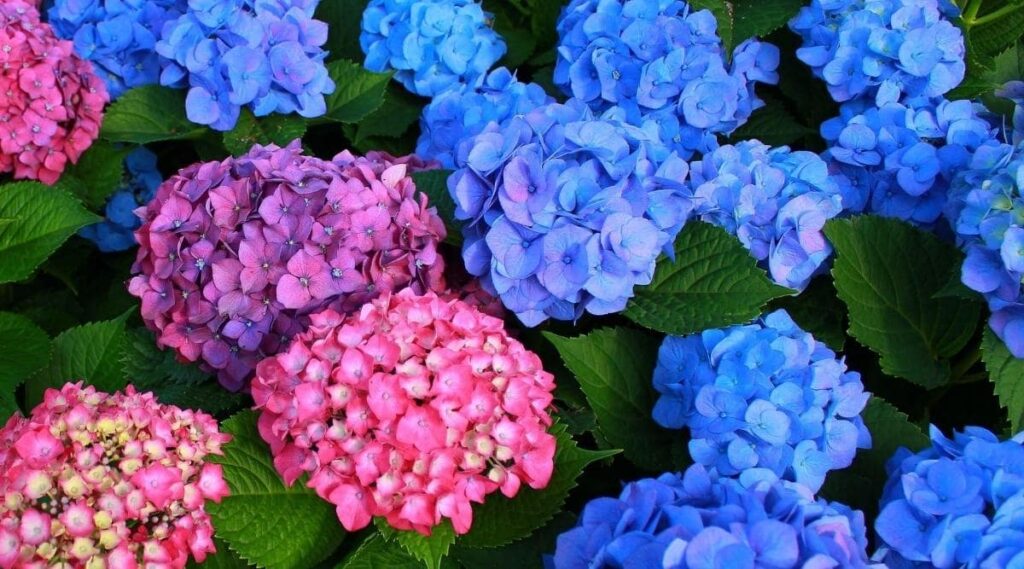
Hydrangeas are known for their vibrant flower clusters which are relatively easy to induce. These ornamental shrubs are versatile, capable of changing flower color based on soil pH.
They prefer well-draining soil and benefit from consistent moisture. Pruning helps in shaping and size control, with some varieties requiring specific care such as winter protection in colder climates.
Tomatoes
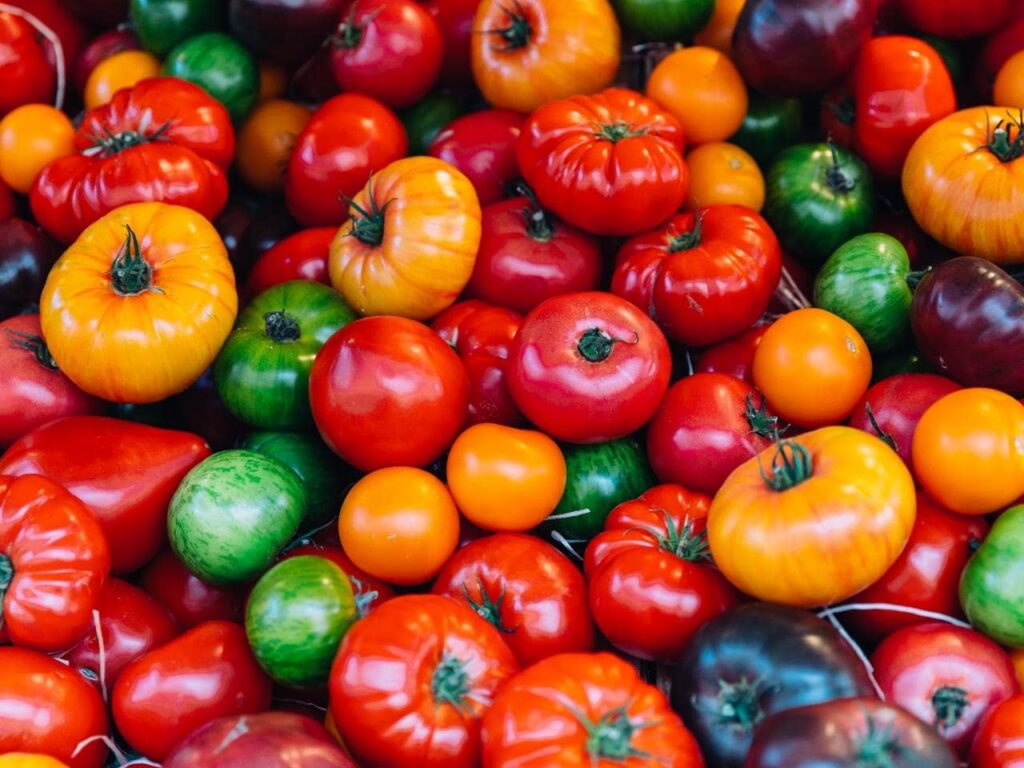
Tomatoes are versatile kitchen staples that prefer slightly acidic to neutral soil. Coffee grounds, leaning towards acidity, can be a suitable addition to the soil as long as you’re careful not to overdo it to avoid nutrient imbalances.
Tomatoes love the sun and do well in well-draining soil with regular watering. Pruning helps in managing plant growth and improving air circulation.
Rhododendrons
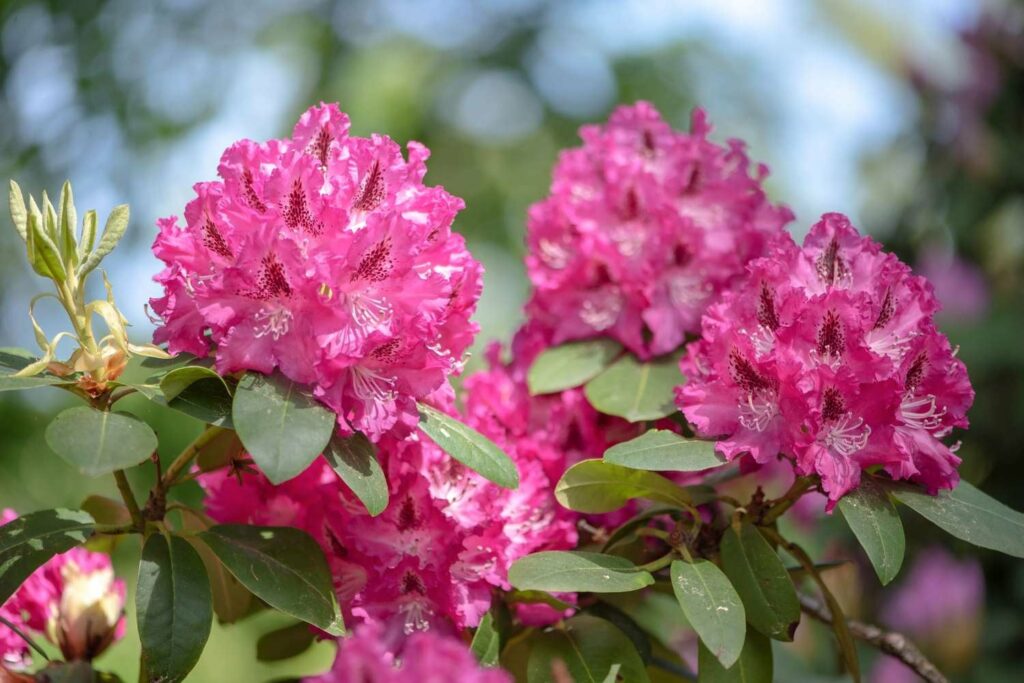
Rhododendrons, famous for their stunning flowers, can be a bit tricky to grow. They like acidic to slightly acidic soil, and coffee grounds help with that since they’re a bit on the acidic side.
These shrubs love the shade and need well-draining soil with a steady supply of water. While they can be a bit finicky in certain conditions, using coffee grounds can create the right acidic environment to help rhododendrons thrive.
Strawberries
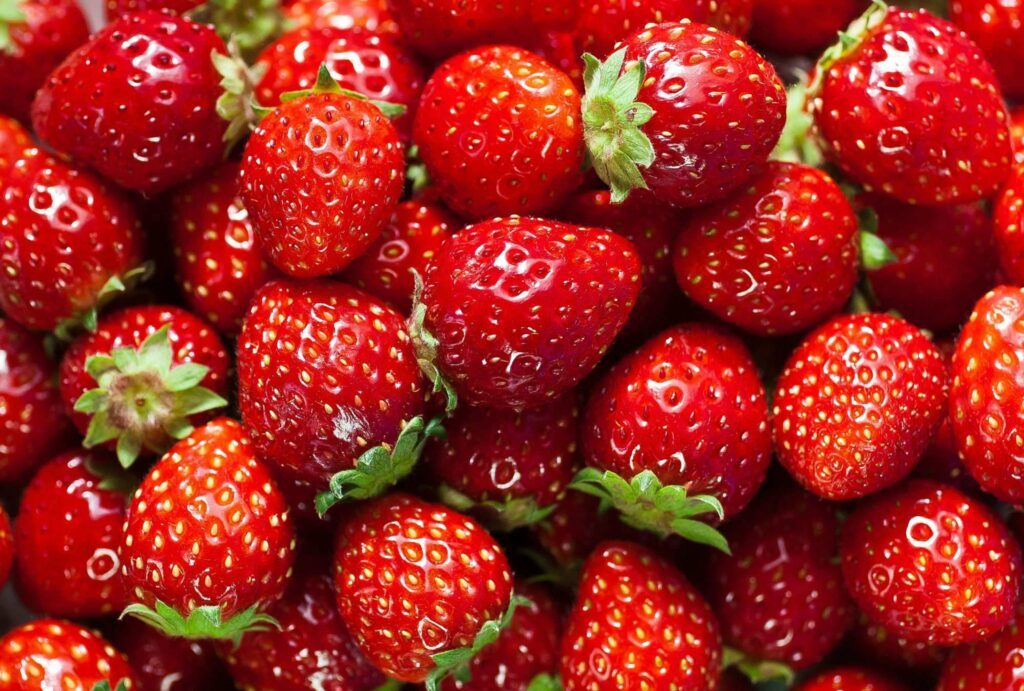
Growing strawberries, known for their sweet and juicy taste, means giving them slightly acidic to neutral soil – and coffee grounds, which are a bit acidic, work well for them. Strawberries are quite adaptable, whether in containers or garden beds.
They need well-draining soil, lots of sunlight, and regular watering. Using mulch keeps the soil moist and controls weeds.
Ferns
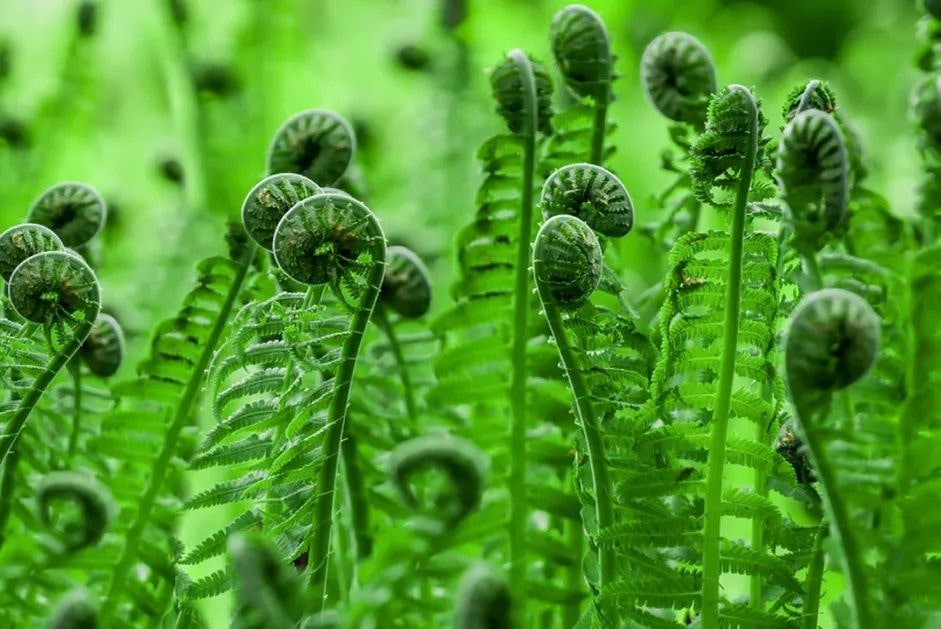
Ferns are loved for their lush and delicate fronds as well as their ease of growth. These adaptable plants can handle different light conditions, but they usually prefer indirect light.
They do best in well-draining soil with steady moisture. Don’t water them too much, though, as that can lead to root rot.
Citrus Trees
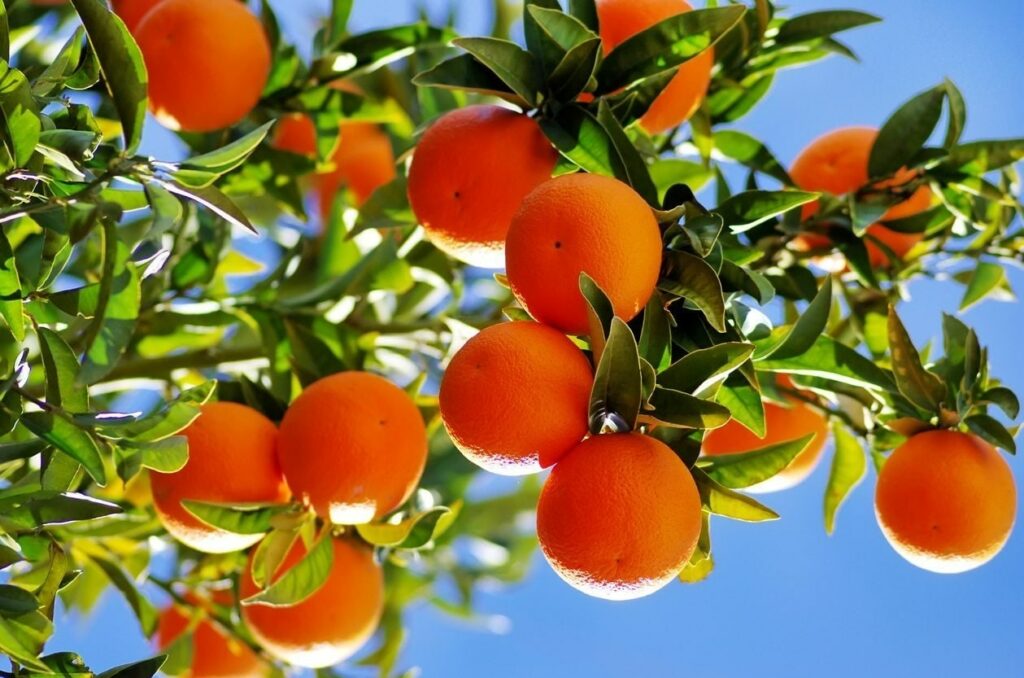
Lemons, oranges, grapefruits, and other citrus trees love acidic to neutral soil – and adding coffee grounds helps improve the acidity. Just give your citrus trees well-draining soil, regular watering, and protection from frost in colder areas.
Feeding them with a balanced fertilizer is a good practice, but they can be picky about nutrient levels. Adding coffee grounds to the soil helps maintain the right pH for healthy growth and may even boost fruit production.
Daffodils
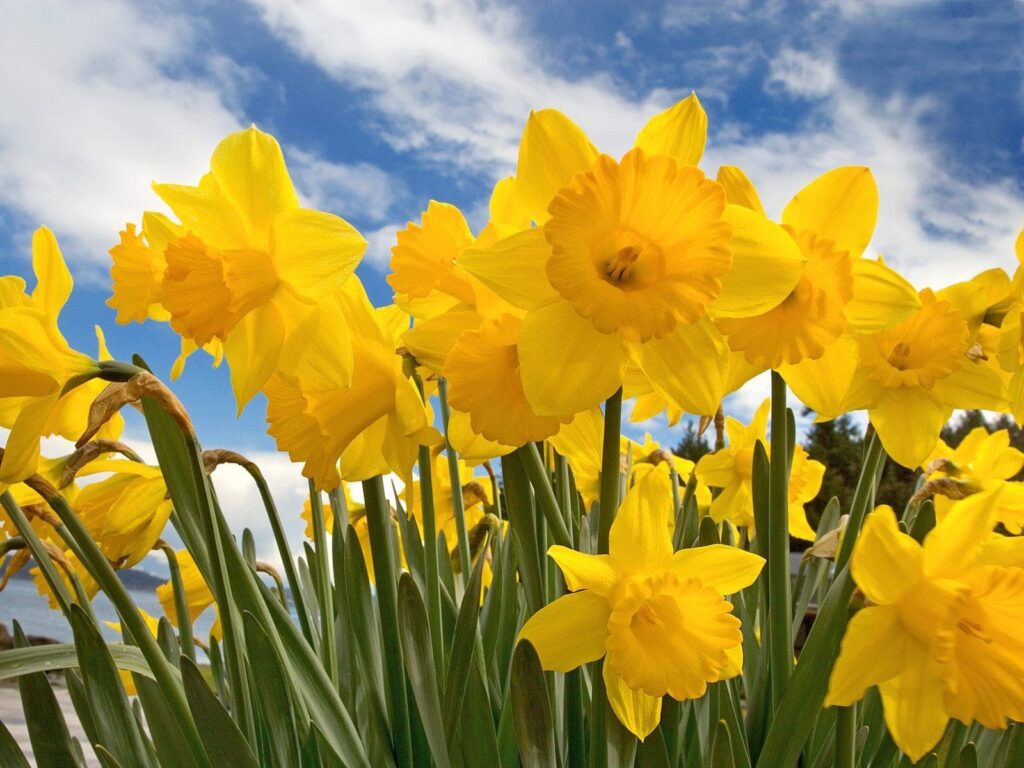
Daffodils like neutral to slightly alkaline soil, and since coffee grounds are close to neutral, they’re a good match. These cheerful trumpet-shaped flowers are easy to grow, heralding the arrival of spring.
Daffodils are hardy and usually don’t demand a lot of attention. These flowers grow best in well-draining soil with just the right amount of moisture.
Lily of the Valley
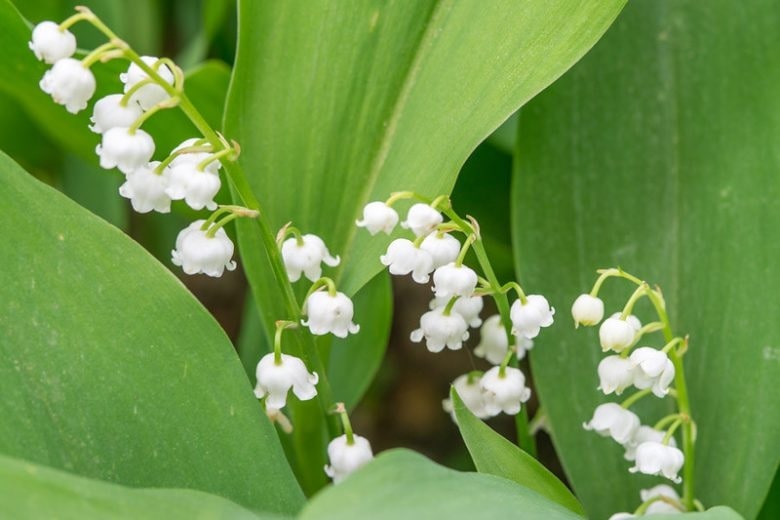
The Lily of the Valley is famous for its sweet-smelling, dainty, bell-shaped flowers. But be careful not to overwater, as these plants like their soil to be moist but not waterlogged.
These perennials enjoy the shade and spread through rhizomes. They don’t need much care, and using coffee grounds every so often helps keep the soil just right.
Fuchsias
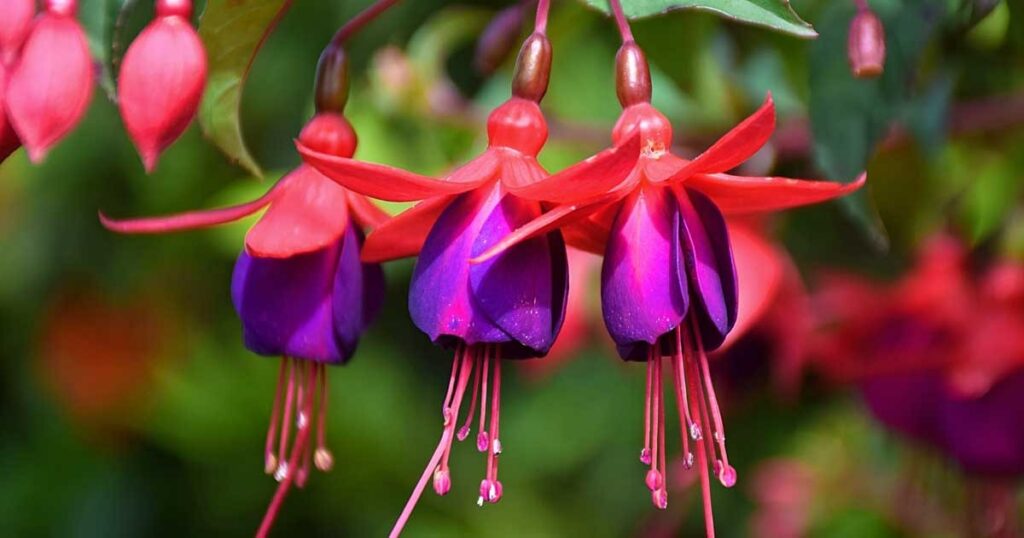
Fuchsias, despite their graceful hanging flowers, can be a bit challenging to grow. These flowers prefer well-draining soil and partial shade, making them a good fit for gardens with filtered sunlight.
Regular pruning is needed for shaping the plant and promoting lots of blooms. While they need a bit of extra care, using coffee grounds can help create the right soil conditions for fuchsias to thrive.
Marigolds
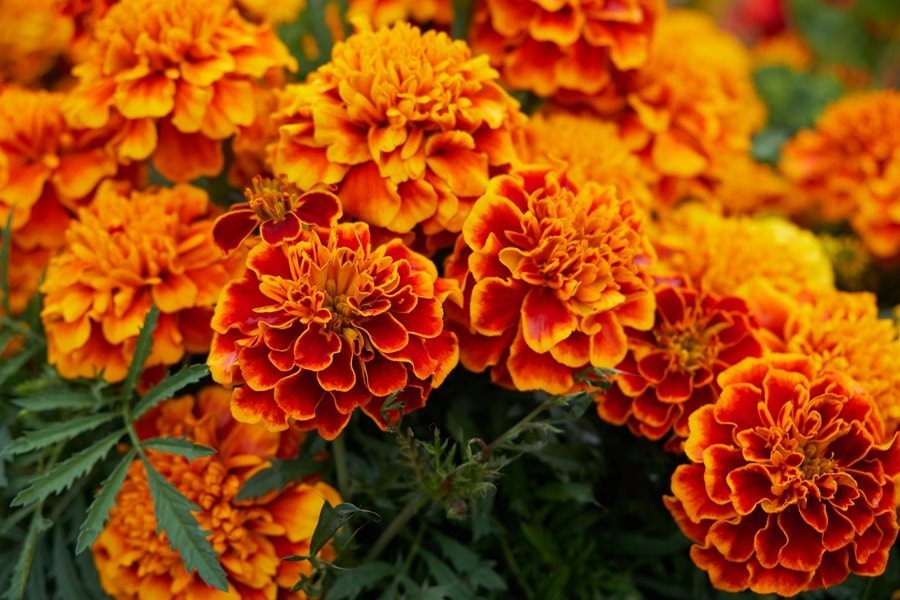
Cheerful marigolds are beloved and grown in gardens not just for their beauty but also for their pest-repelling properties. They’re happy in soil that’s neutral to slightly alkaline, which means they can adapt to different garden conditions.
These sun-loving annuals prefer well-draining soil and don’t need too much water. You can plant them next to plants who love acidic soils without any issues.
Holly

With its distinctive red berries and shiny leaves used for holiday decorations, holly makes a fantastic border plant to grow. It likes slightly acidic to neutral soil, and coffee grounds, which are a bit on the acidic side, work well.
Just be careful not to use too many coffee grounds to avoid making the soil too acidic. This will help the plant in its growth and overall well-being, encouraging leaf and berry production.
Radishes
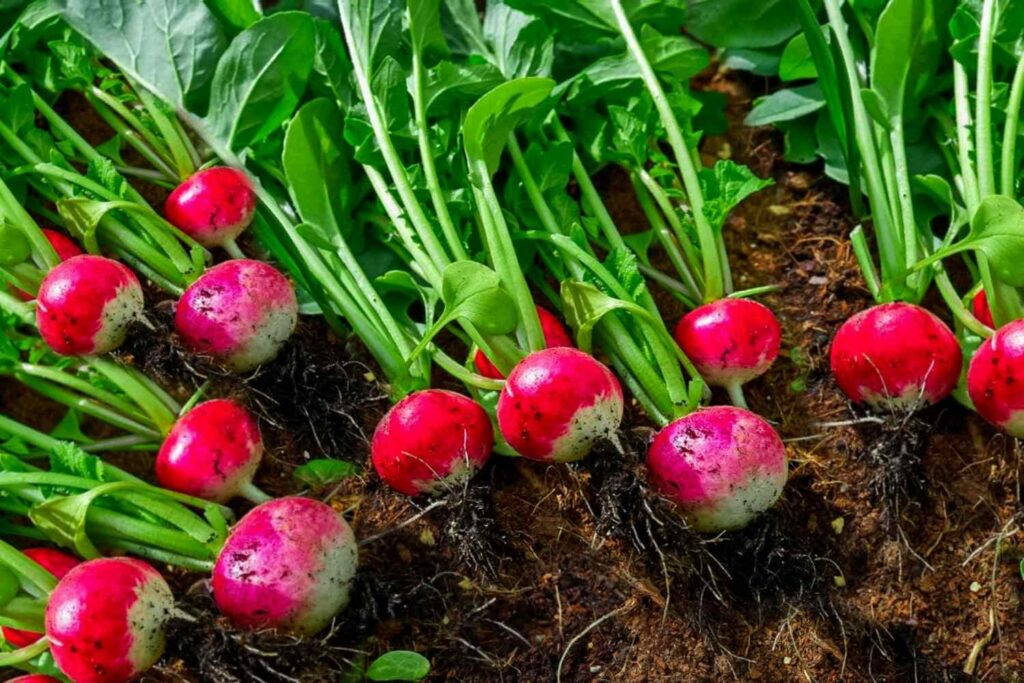
We love radishes because they’re super easy to grow, and they’re known for their quick growth and zesty taste. These veggies love cool weather, and they’re happy with well-draining soil that stays consistently moist.
You can grow them in your garden or in containers, and planting them in loose, fertile soil helps them grow fast. You can add some coffee grounds in the soil to help with the drainage and aeration – and your radishes will thank you for that.
Cucumbers
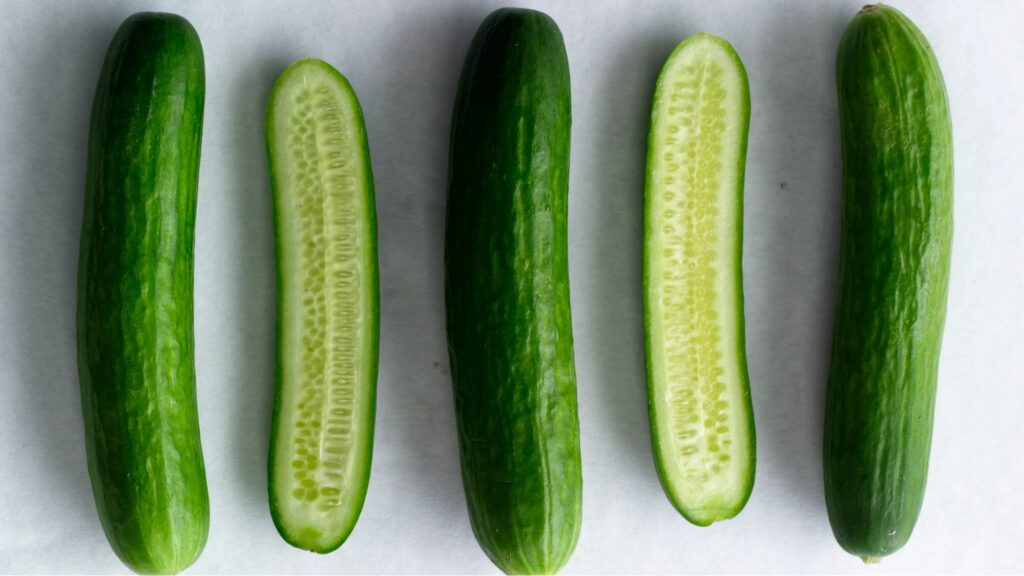
Cucumbers like slightly acidic to neutral soil, and since coffee grounds are a bit on the acidic side, they can be a good addition. But don’t go overboard with the coffee grounds to avoid messing up the nutrient balance.
These sun-loving vines thrive in well-draining soil and need regular watering. Giving them support for climbing and making sure they have enough space to grow are keys to their success.
Beans
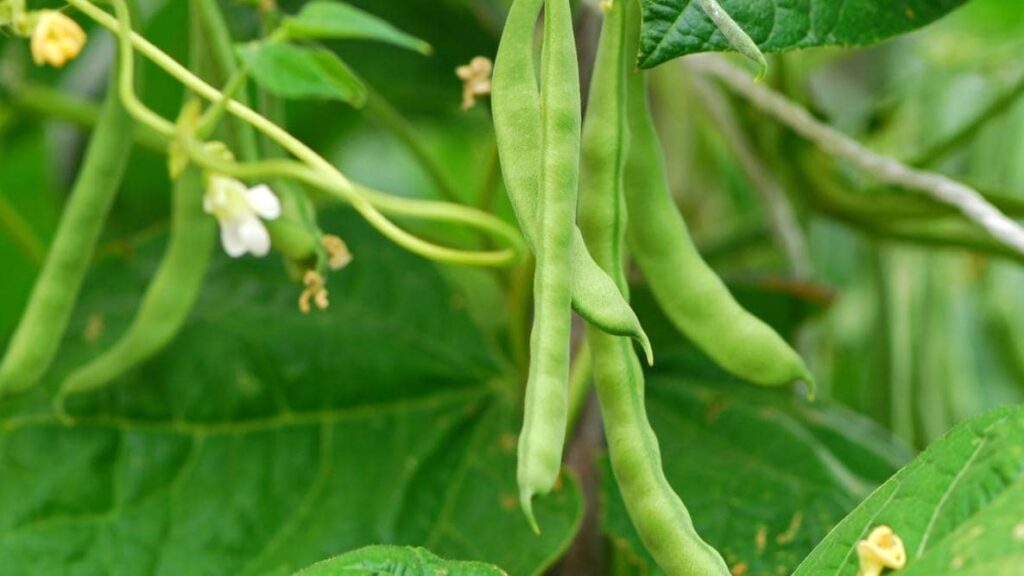
Beans are grown for their nutritious content and soil adaptability. When adding coffee grounds, don’t use too many coffee grounds as it can lead to too much nitrogen and cause imbalances.
Beans are pretty easy to take care of, especially when spaced and supported properly for climbing varieties.
Carrots
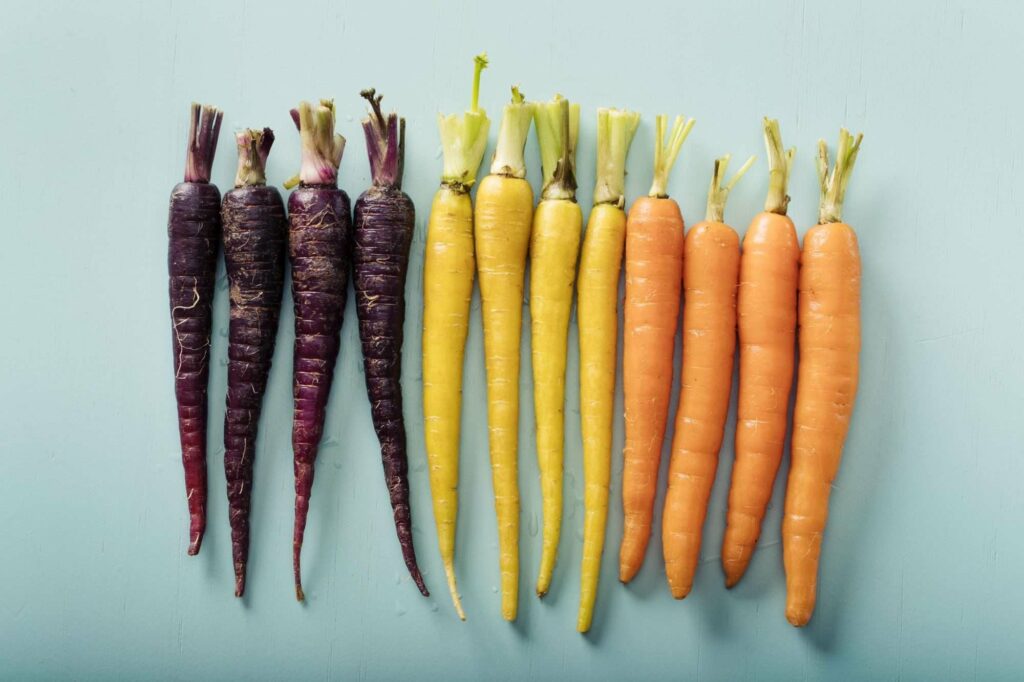
Sweet and crunchy carrots adapt well to different types of soil, including acidic ones. You can add some coffee grounds to their soil, but not too much to avoid making the soil too acidic.
Watch out for forking, especially when there are obstacles like stones or compacted soil. Thinning them out and avoiding heavy, rocky soil are good practices for healthier carrots.
Zinnias
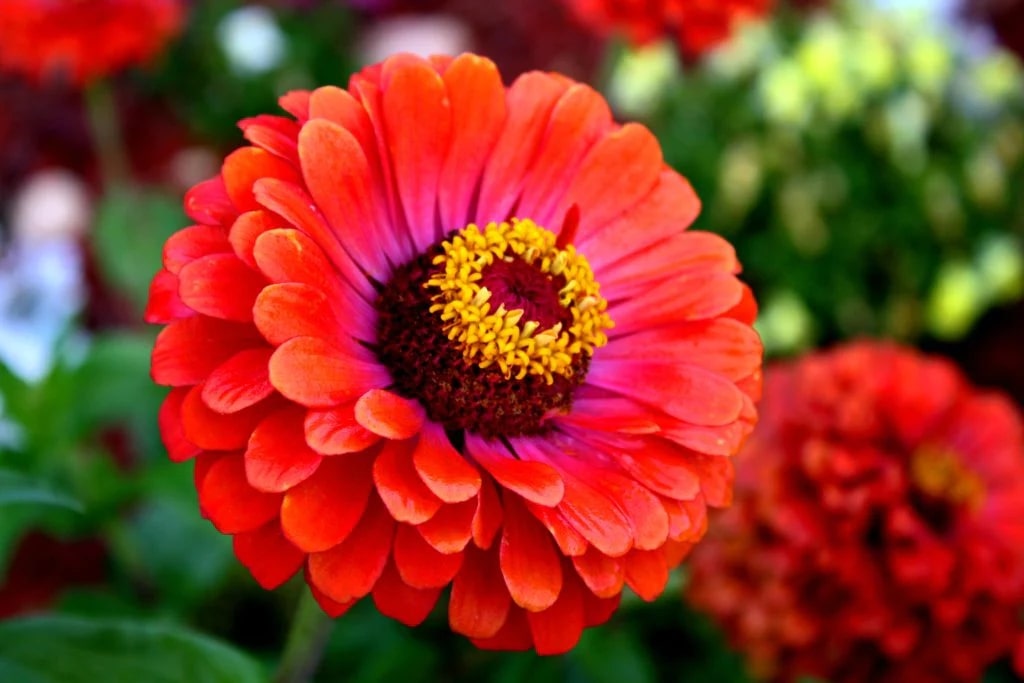
Blackberries, with their juicy and tasty berries, like slightly acidic to neutral soil, and coffee grounds, being a bit on the acidic side, work well for them. But don’t go overboard with the coffee grounds, as too much can mess up the nutrient balance.
These plants enjoy the sun, and they need well-draining soil. Regular pruning is a good idea for getting the most fruit.
How to Use Coffee Grounds for Plants
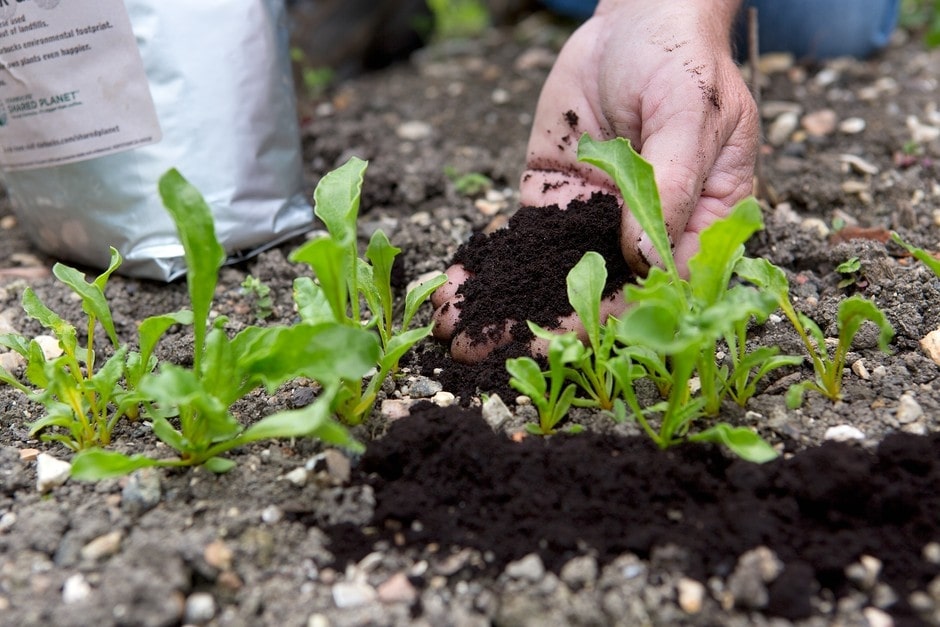
| Factor | Information |
| Level of Expertise | Easy ●○○○○ |
| Tools or Materials Needed | Used coffee grounds, gardening gloves (optional) |
| Estimated Costs | Low (if you use your own) to None (if you ask for used coffee grounds from your local coffee shop) |
Whether you use your own or find other ways to get coffee grounds, mixing them into the soil for your plants to enjoy is pretty simple.
How to Use Coffee Grounds for Plants
1. Collect your coffee grounds.
Make sure they’ve cooled down and dried before putting them to work in your garden.
2. Grab your tools.
Grab some gardening gloves to keep your hands clean – that’s pretty much it, aside from your coffee grounds.
3. Identify the plants.
Figure out which plants in your garden will love the acidity and nutrients in coffee grounds. Check plant preferences for acidity levels.
4. Sprinkle or mix the coffee grounds evenly around the base of your selected plants.
Don’t go too heavy to avoid overdoing it. Remember, it’s better to use less than more.
For better blending, lightly mix the coffee grounds into the top layer of soil using a hand tool or rake. This helps spread the nutrients around.
5. Monitor and adjust as needed.
Watch your plants and soil. If you see signs of over-acidity, like yellowing leaves, ease up on the coffee grounds.
Depending on your garden size and plant needs, do this every few weeks or as part of your regular gardening routine. For balanced soil, mix the coffee grounds with other compost materials to help create a fertile environment for your plants.
What plants should I not put coffee grounds on?
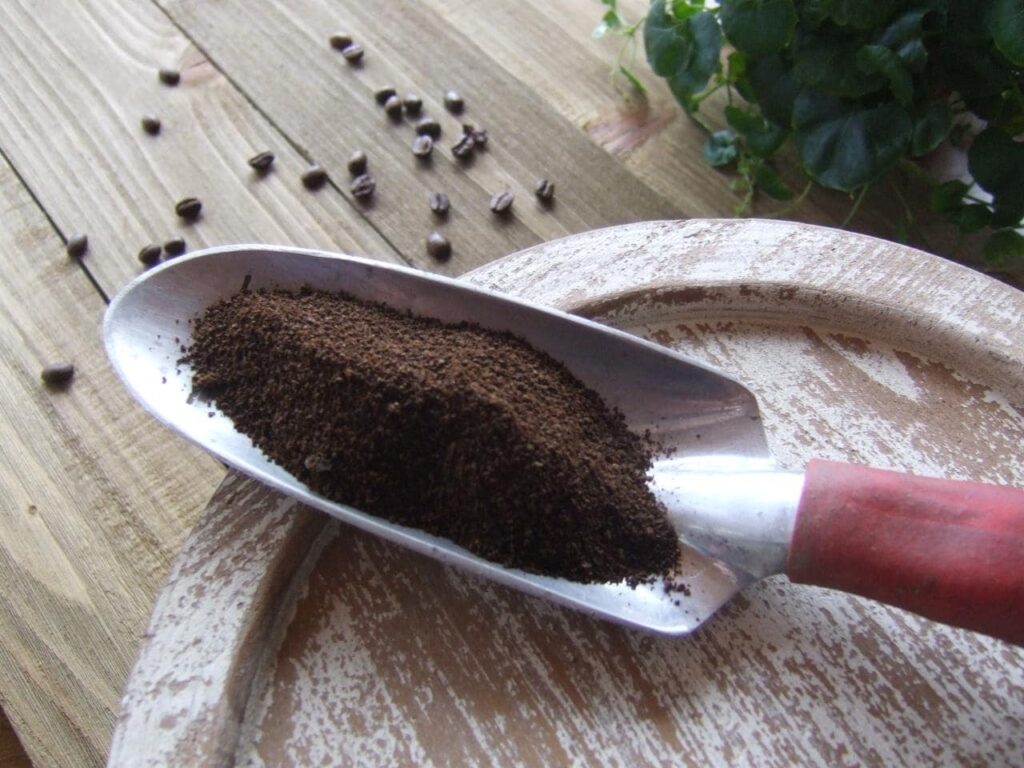
Some plants that you should not put coffee grounds on include succulents and cacti. Some plants might not like the extra nitrogen in coffee grounds, which can result in root growth issues.
To make sure you don’t harm or damage your plants with coffee grounds, you have 2 options. The first is to research their soil pH preference, and the second is to use coffee grounds in moderation when using them.
What are the disadvantages of coffee grounds as fertilizer?
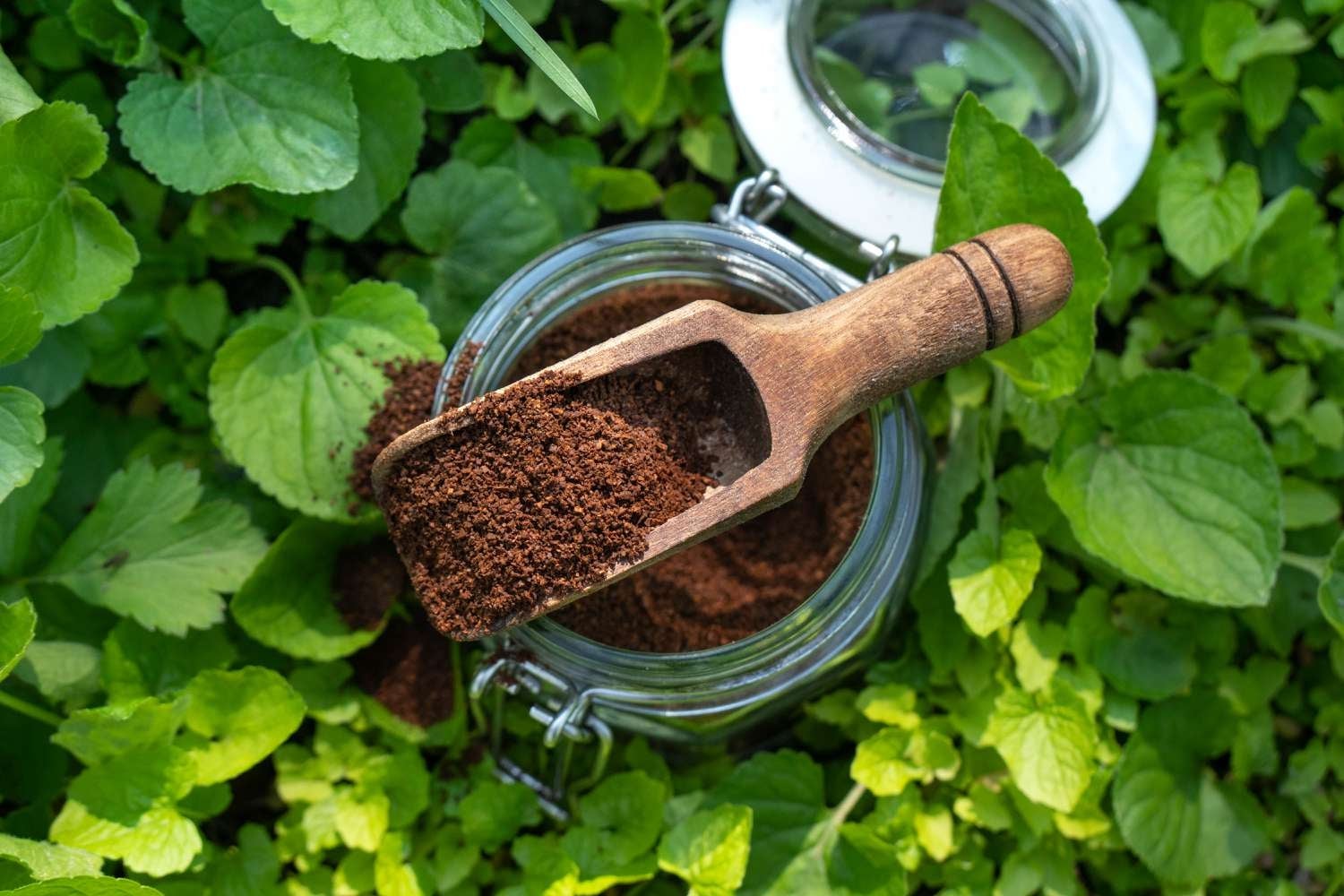
Disadvantages of coffee grounds as fertilizer include overacidity, nitrogen imbalance, mold growth, pests, excess caffeine, imbalanced soil nutrients, slow decomposition, and potential fungal issues. Let’s go over each drawback quickly.
Over-Acidity
Too much coffee grounds can make the soil too acidic, negatively affecting plants that prefer neutral or alkaline soil conditions.
Nitrogen Imbalance
Too much nitrogen can lead to an imbalance in the soil. This can result in issues like excessive foliage growth at the expense of fruit or flower development.
Mold Growth
Coffee grounds are usually moist and when applied in thick layers, they can create the perfect conditions for mold to grow. This can be particularly problematic in conditions with poor airflow.
Potential Pests
In some cases, the strong aroma of coffee grounds may attract pests. Of course, this can vary depending on the local pest population and the specific plants in your garden.
Caffeine Content
While the caffeine content in used coffee grounds is not that much anymore, it may still affect certain plants negatively.
Lack of Balanced Nutrients
Coffee grounds are rich in nitrogen but lack other essential nutrients. Using them as the sole fertilizer can easily result in an incomplete nutrient profile for plants.
Slow Decomposition
Coffee grounds take time to break down. If not mixed properly with the soil, they may form a crust on the surface that limits water from getting to the soil.
Potential for Fungal Diseases
In damp conditions and in areas with frequent rainfall, the moisture-retaining properties of coffee grounds contribute to the development of fungal diseases.





